
The Writer’s Journey
A Storyteller's Framework
Many of our most powerful stories follow the same ancient narrative pattern that mythologist Joseph Campbell has distilled from legends, myths and epics. In his book The Hero with a Thousand Faces, he describes an adventure that tells us again and again what it means to be human: the search for self, the bitter separation from familiar bonds and habits, the growth and maturation of the person. This monomyth tells of the need to grow up and stand on one’s own two feet in a world full of fear, uncertainty and danger. So it tells … about us.
Every culture, every religion and every era recognises a monomythic pattern of storytelling. Its sequence, stages and forms reflect the substance of human experience, which the Swiss psychologist Carl Gustav Jung described as archetypes.
Simon Demmelhuber
Typology of the Narrative, 2016
This monomyth is hidden behind a myriad of masks, sets, motifs and characters: films such as Pretty Woman, Star Wars, Harry Potter and Wall-E seem like completely different works – each with its own identity. And yet, at their core, they are all reinterpretations of the same story.
In my processes, I use a modified model of Campbell’s monomyth, Christopher Vogler’s “Writers Journey”, to strategically plan the communication of brands. In his popular “Memo from the Story Department”, the American screenwriter condensed Campbell’s 17 stages into 12. I think his approach is more accessible and easier to adapt for our purposes. But more on that later.
The first thing to do here is to understand. And to do that, we’ll do the most sensible thing: we’ll dust off my DVD collection.
The Writers Journey is gender neutral. To emphasise this, the individual acts are written alternately in female and male form.
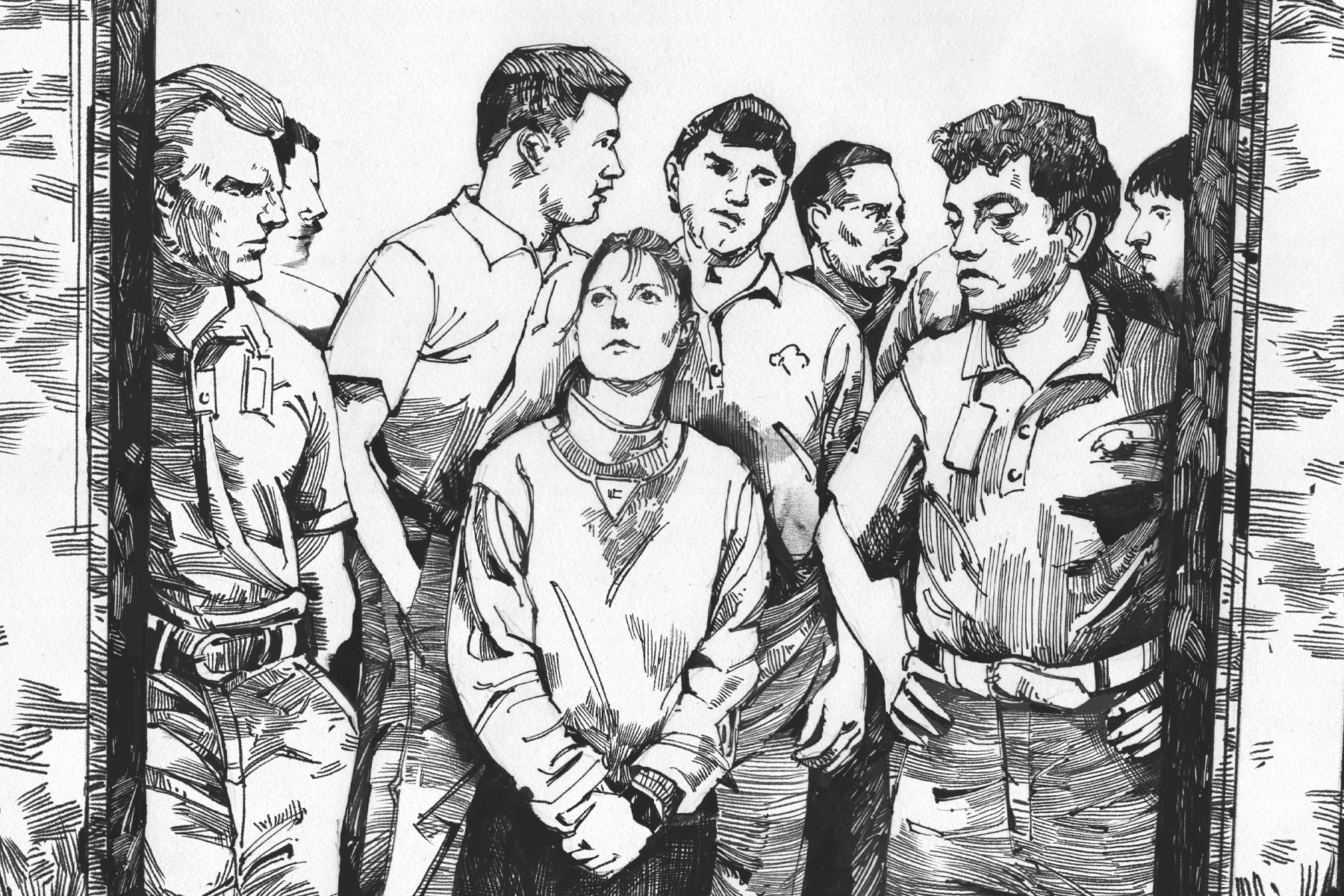
Chapter 1: The Ordinary World
The familiar world appears in its most monotonous facets. Our protagonist seems out of place. We see a person who exists but does not live. He feels safe in his routine, but also lost. And we see his world gradually losing its charm, joy and glamour.
Crawford: [leaning towards Clarice] Starling, when I told that sheriff we shouldn't talk in front of a woman, that really burnt you, didn't it? It was just smoke, Starling. I had to get rid of him.
Starling: It matters, Mr. Crawford. Cops look at you to see how to act. It matters.
Silence of the Lambs, 1991
Through the familiar world, we get to know the protagonist in his most human form. He is a victim of his circumstances, sometimes even of his own making. There is nothing heroic about him. On the contrary, he is simply a human being who has missed the chance to follow his destiny on several occasions.
American Beauty (Title Image): Lester Burnham experiences the climax of his day early in the morning – in the shower. The Silence of the Lambs: During her training as an FBI agent, Clarice Starling is confronted with prejudices and obstacles because of her gender. Star Wars – a new Beginning: A young Luke Skywalker dreams of a great adventure – the desert planet Tatooine symbolises the emptiness felt by the protagonist. The Matrix: Thomas Anderson (aka Neo) works as a programmer in a cramped and grey open-plan office. His body is clearly too big for the box in which he works. The Wizard of Oz: Dorothy sings of the rainbow. Her familiar world in Kansas is coloured in sepia tones.
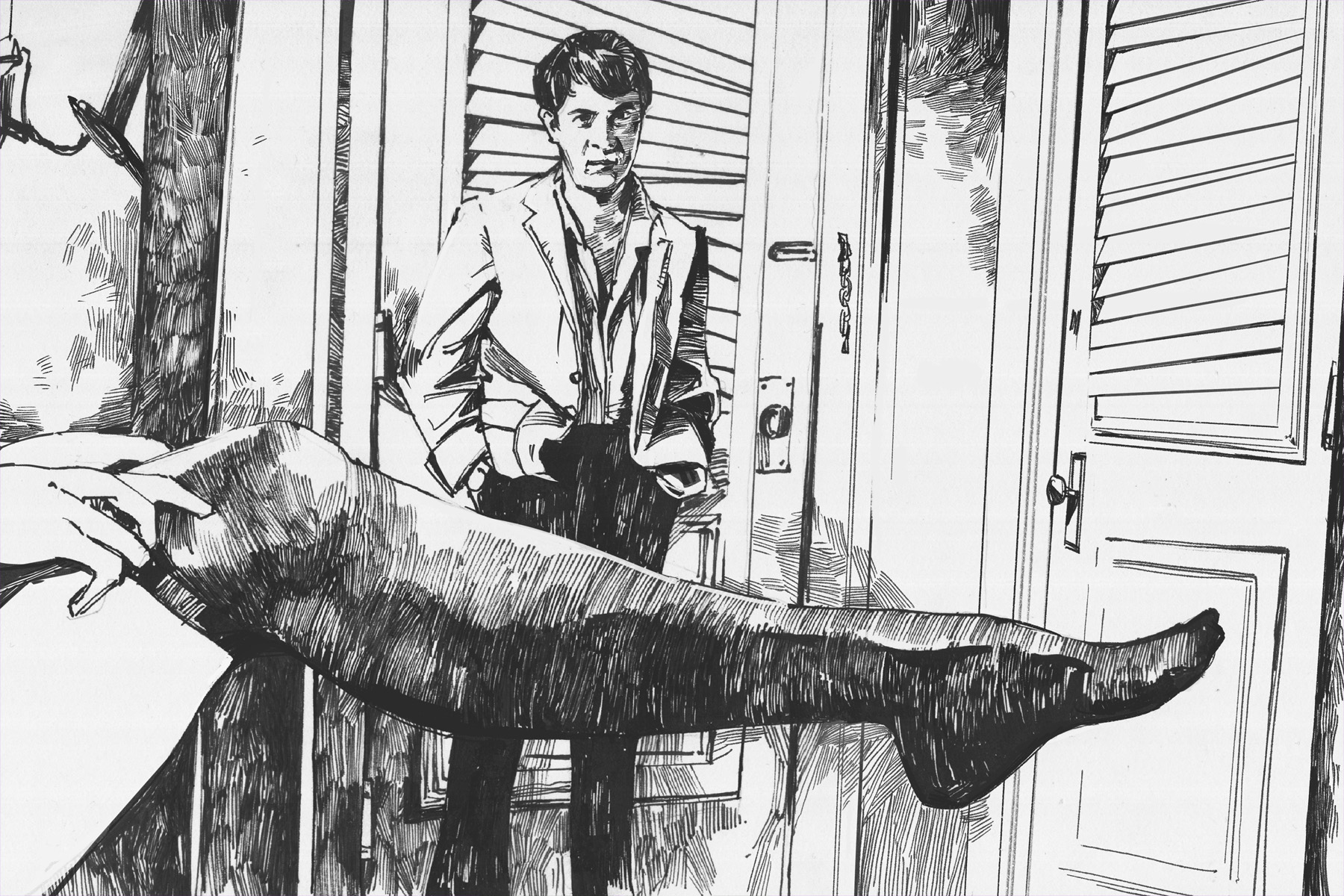
Chapter 2: Call to Adventure
The call to adventure comes suddenly and unexpectedly. And for a brief moment, it tears the protagonist out of her familiar life. Something threatens her family, the peace of her community is shaken, her world view is challenged. The heroine is confronted with the destiny she has secretly longed for: a meaningful role in the great play called life.
Mrs. Robinson, you're trying to seduce me ...
aren't you!
Benjamin Braddock, The Graduate, 1967
The call to adventure takes many forms in film and literature: A phone call, a dramatic event, a seemingly chance encounter. Sometimes it happens in several stages, as some protagonists refuse several times. The Call to Adventure is their first contact with an exciting, unknown world. Through the eyes of our heroine, we catch a glimpse of what could be and what will inevitably follow: An adventure that at that moment awakens her longing, but also her deepest doubts.
The Graduate: Mrs Robinson asks Ben to drive her home, where she tries to seduce him. The Matrix: Neo receives a mysterious message on his computer screen: “Follow the white rabbit.” Pretty Woman: Businessman Edward stops in the red-light district with his Lotus and talks to Vivian, a prostitute, for the first time. Lord of the Rings: Frodo touches the Ring of Power and sees the Eye of Sauron in a vision. Star Wars – a new Beginning: The droid R2D2 plays a holographic message from Princess Leah, who asks the Jedi Obi Wan Kenobi for help.
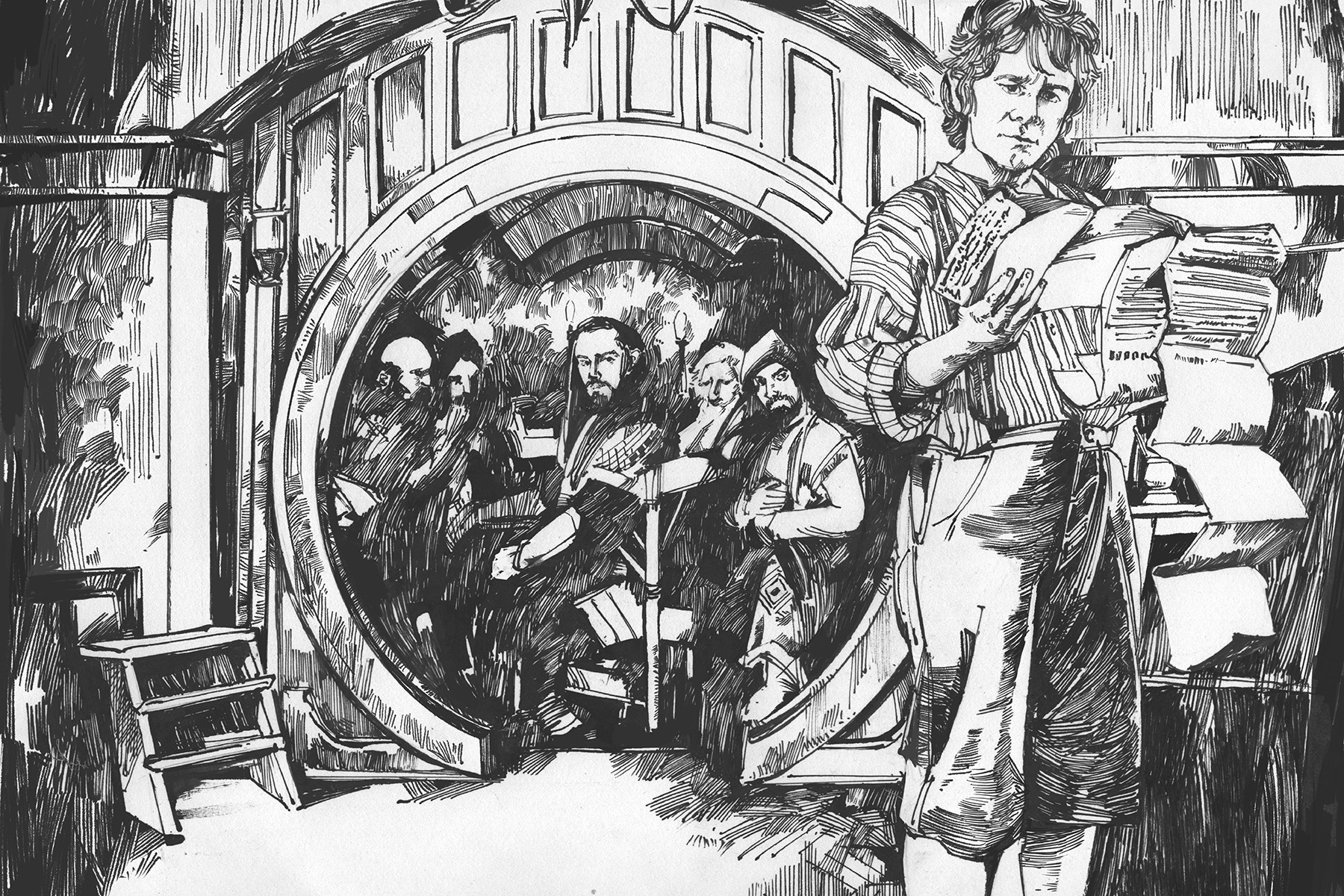
Chapter 3: Refusal of the Call
Our protagonist refuses. Sometimes it is others who prevent him from his adventure – gatekeepers he has to overcome. Sometimes it’s inner doubts or fears: he simply doesn’t trust himself to take the step. Whatever it is, the familiar world suddenly seems more colourful than it was a moment ago. He finds excuses not to go. After all, he doesn’t want to jeopardise the life he leads.
Gandalf: The world is not in your books and maps. It's out there.
Bilbo: I'm not a warrior, I'm a Hobbit.
The Hobbit, 2012
The Refusal serves to define the character of our protagonist. He is not the shining hero, but still a completely normal person with fears and weaknesses. We sympathise with him, we can empathise with his doubts. We too often prefer routine to adventure, after all.
The Pursuit of Happiness: Chris, a struggling salesman, plays basketball with his son on the roof of a high-rise building. When he dreams aloud of playing in the NBA one day, his father replies that he should find something he is really good at. This role is called the gatekeeper in film and literature. Star Wars – a new Beginning: Luke is reluctant to go on this adventure. He can’t let Aunt Beru and Uncle Owen down. Rocky: The washed-up boxer Rocky refuses the opportunity for fame and greatness with the simple words: “Thanks, but no thanks.” The Matrix: During his escape from the office building, Neo climbs out of the window. In his fear of death, he refuses to listen to the voice on the phone and jump into the depths.

Chapter 4: Meeting the Mentor
The protagonist meets a mentor who plays a key role in her journey. The Mentor knows the pitfalls of the unknown world and recognises our heroine’s potential. He meticulously prepares her for lurking dangers and obstacles – sometimes with knowledge, sometimes with training, sometimes with the magic sword. Our heroine is given the most powerful armament for her journey: The confidence to be up to the challenge.
First learn stand, then learn fly.
Nature rule, Daniel-san, not mine.
Mr. Myagi, Karate Kid, 1984
The Mentor explains the unknown world not only to our heroine, but also to us. Figuratively speaking, he shows us the dragon and explains how to slay it. The Mentor often accompanies the protagonist throughout the journey – or appears at the right place at the right time to guide her back onto the right path.
Karate Kid: Mr Myagi not only reveals the art of karate to Daniel, but also his deep philosophical knowledge about a life in balance and peace. Star Wars – a new Beginning: The hermit Ben Kenobi teaches Luke about the Force, a magical power that is inherent in all elements. He gives him his father’s weapon, a lightsaber. Pretty Woman: The hotel manager instructs Vivian on how to move, dress, speak and even dine in noblesse oblige. The Matrix: Morpheus gives Neo the choice between a red and a blue pill – a way forward, or back to his familiar world.
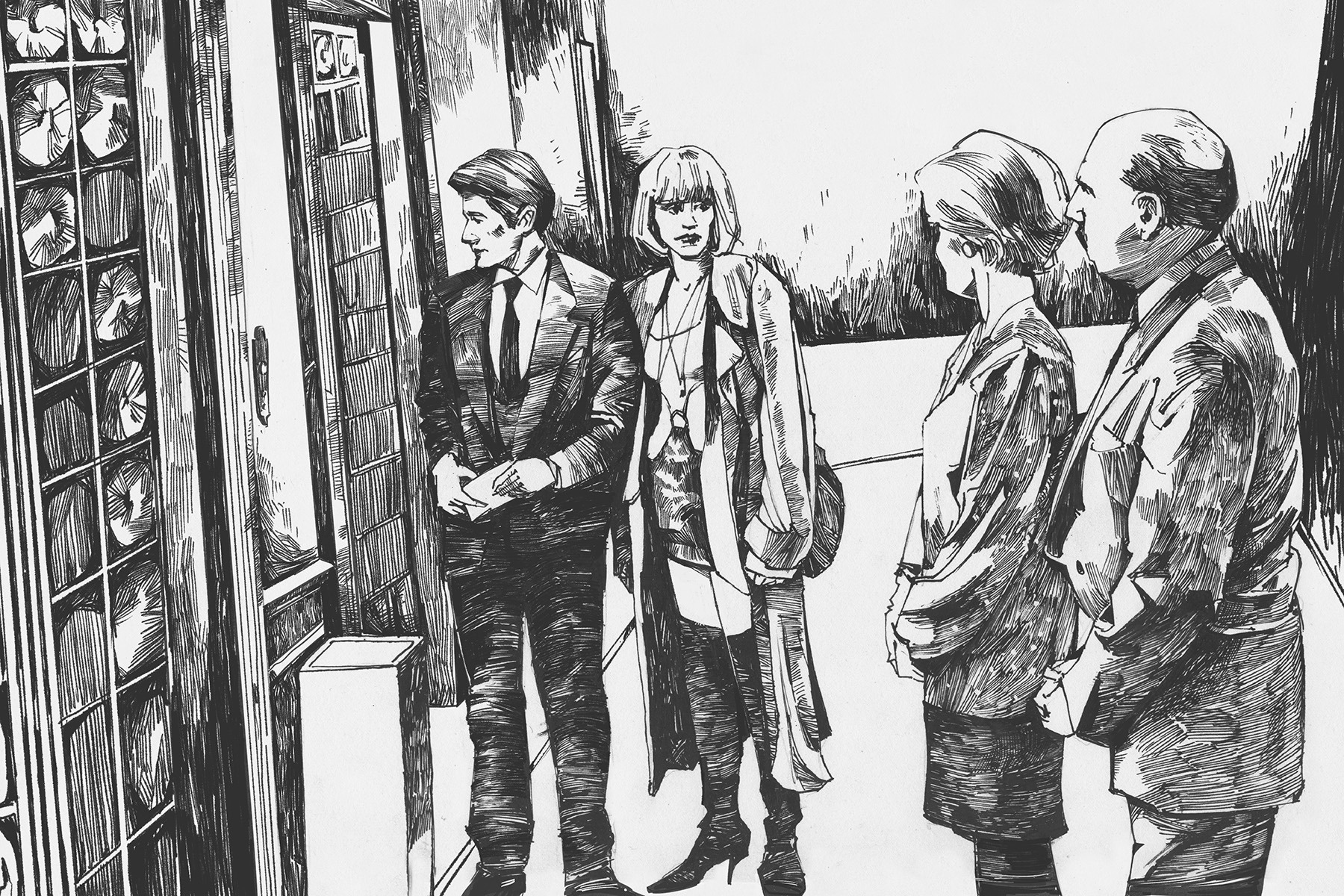
Chapter 5: Crossing the Threshold
With renewed courage, our protagonist ventures into the unknown and enters a strange world. There is no turning back from here – at least not yet. In film and literature, the first threshold is often represented by a symbol or an object: a vehicle, a door, sometimes a magic mirror.
Vivian: Well, color me happy! There's a sofa in here for two!
[A chagrined Edward turns to the couple.]
Edward: First time in an elevator.
Woman: Ah.
Pretty Woman, 1990
The threshold leads seamlessly into the main plot of the story. It marks the beginning of the second act of our journey and we enter the Unknown World, which feels like an antithesis to the one we have witnessed before. While our hero’s familiar world just seemed grey and monotonous, his new surroundings are bright and colourful. If it was uneventful and simple, it is now exciting and complex. Our hero is fascinated and frightened at the same time. And if the film or literature is good, so are we.
Pretty Woman: The threshold is an elevator that takes Vivian from the lobby to businessman Edward’s penthouse. The elevator is also a symbol of social advancement. The Matrix: The threshold is a wall of wobbling, indefinable mass that reflects the room. This magical mirror is not the only reference to Alice in Wonderland. Alice in Wonderland: The threshold is symbolised by the rabbit hole into which Alice follows the crazy rabbit. Wizard of Oz: The threshold is underlined by the colour scheme of the film: Whereas the Ordinary World is painted in sepia, the Unknown World is colourful.

Chapter 6: Tests, Allies and Enemies
Our protagonist takes her first steps into the unknown. Mistakes and mishaps are not long in coming and provide the first humorous, sometimes even absurd situations in film and literature. The story gradually introduces other characters and the world is divided into good, evil and something in between. This refers to a shape-shifter who keeps us in the dark about his motives and later causes dramatic twists and turns.
Dorothy: How can you talk if you haven't got a brain?
Scarecrow [smiling]: I don't know. But some people without brains
do an awful lot of talking. Don't they?
Wizard of Oz, 1938
The new world confronts our heroine with new rules and challenges, while introducing us to its inhabitants. We learn more about the protagonist’s destiny, from which she can no longer escape. The first sidekicks are established. Mostly of the endearing, funny or even quirky variety, they brighten and facilitate our heroine’s journey. Some also complicate it.
Wizard of Oz: Dorothy meets the silly but surprisingly wise Scarecrow, the spiteful but cowardly Lion and the heartless but perceptive Tin Man. The Matrix: After waking up, Neo meets other liberated humans on the Nebuchadnezzar and learns about Zion, the last bastion of humans against the machines. On board is the dodgy Cypher, who turns out to be a shapeshifter and traitor. Harry Potter and the Philosopher´s Stone: Harry meets his new friends Hermione and Ron on the train. In the very first scene in Hogwards, Malfoy is stylised as a sneak. Professor Snape keeps changing his form throughout the films, making it difficult for us to judge him correctly.
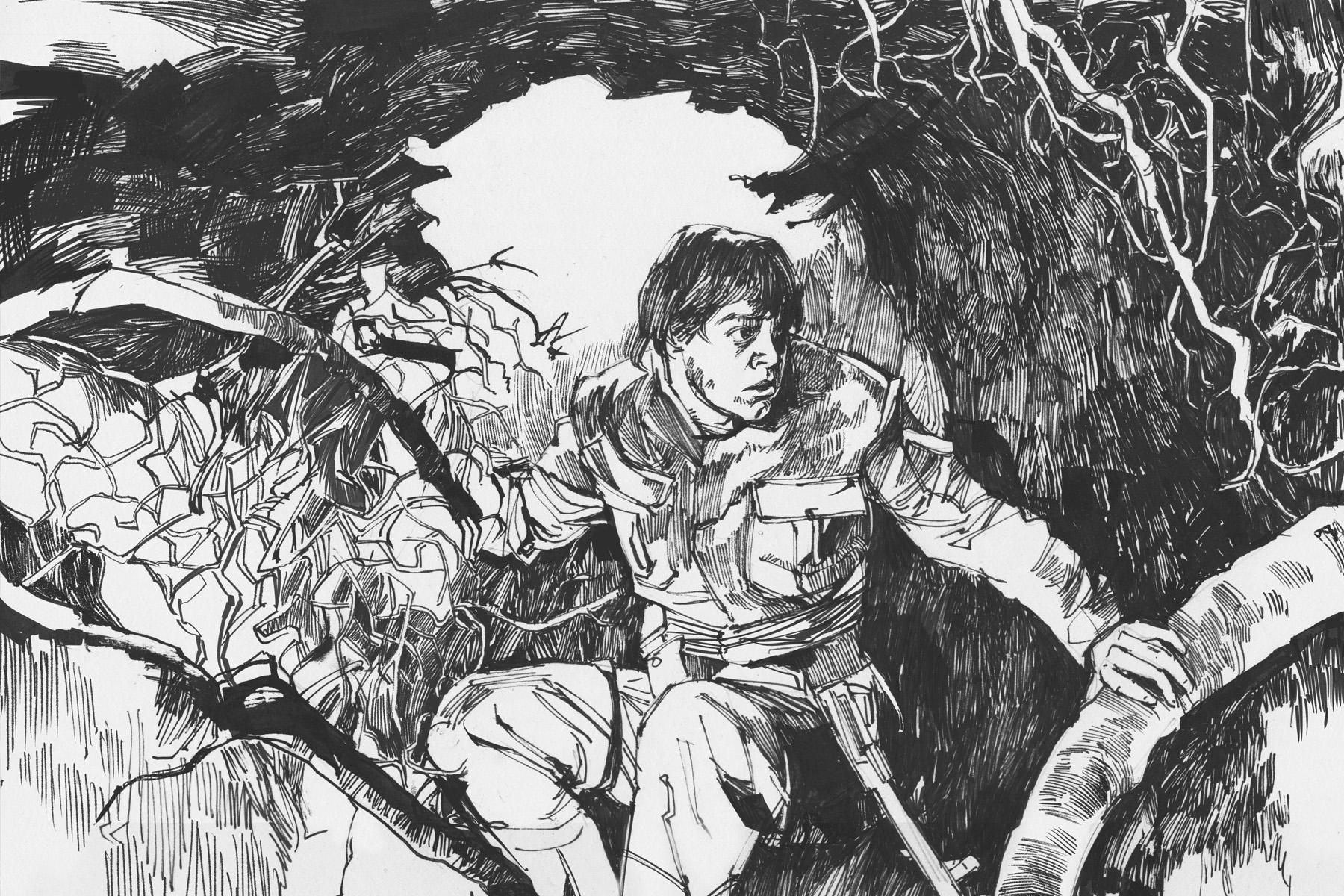
Chapter 7: Approaching the Innermost Cave
Our protagonist’s journey is heading towards a climax: a dramatic struggle for life and death. The innermost cave is a metaphor in film and literature because the first part of the conflict is not physical, but takes place in our protagonist’s head: He has to overcome weaknesses, doubts and fears. The hero realises that he might fail. Film and literature slow down the pace because this moment needs space. The catharsis is allowed to unfold.
Luke: What is in there?
Yoda: Only what you take with you.
Star Wars – the Empire Strikes Back, 1980
His doubts awaken a familiar feeling in us: the remembrance of our own inner demon – our self-confidence that lets us down before trials, our arrogance that blinds us to danger or our banal desire to please everyone. This is a crucial reminder that our hero is only human after all.
Lord of the Rings – Fellowship of the Ring: Frodo and his companions descend into the mines of Moria. In its depths, they are confronted by a horde of Orcs, but also by the terrors of the cave – a Balrog. Aliens: Ripley and Newt feel their way into the Alien Queen’s lair. Lion King: Simba enters a dark cave where he learns more about his father Mufasa and the circle of life. The scene represents his inner journey to his true potential. Star Wars – the Empire Strikes Back: Luke enters a cave that confronts him with his greatest adversary: himself.

Chapter 8: The Ordeal
The Ordeal determines the fate of our heroine. An inner conflict now becomes a physical one: face to face with her adversaries, the protagonist makes the decision to be courageous. If she triumphs, she surpasses herself and possibly fulfills her destiny. If she fails, every challenge she has overcome up to this point will have been in vain.
The girl became a soldier. The soldier became a leader.
And the leader became a legend.
Zhou, Mulan, 2020
Sometimes she is severely injured and fights for her life. Few succeed at the first attempt. And yet her failure is also a gain: whether physical, emotional or moral, failure allows our heroine to grow. She learns valuable lessons not only about herself and her limitations, but also about her antagonists. And she learns, in a painful way, how they might still be defeated in the end.
Rocky: Rocky is badly injured in the fight with Apollo Creed, but refuses to give up, demonstrating his unbridled will. Harry Potter and the Goblet of Fire: During the Triwizard Tournament, Harry has to fight a dragon. Notting Hill: Anna Scott confesses her love to bookseller William Thacker and risks everything. Mulan: Mulan fights in the decisive battle with her hair down and embraces her identity as a woman.

Chapter 9: The Reward
Our hero has made great sacrifices. In film and literature, this is always rewarded. Wealth, fame, experience, sometimes an object – something of crucial value to our protagonist. The love for a supporting character deepens – or is finally answered. The symbol is a kiss, with which the loved one shows the battered hero what is worth fighting for.
Mary Jane: Do I get to say thank you this time?
[she reaches for his mask]
Spider-Man: Wait!
[she pauses, then pulls his mask down to kiss him.]
Spider-Man, 2002
The reward is a moment of triumph and relief – even after defeat. It turns the negative into a positive, the tonality of film and literature changes, we are at ease. The reward is closely linked to the fate of our protagonist. In one way or another, it gives him the knowledge or strength he needs to finally achieve his goal.
Star Wars – a New Hope: The reward is the plan for the Death Star, which the rebels need for its destruction. Harry Potter and the Philosopher´s Stone: Harry, Ron and Hermione are rewarded with points for bravery and dedication, winning the House Cup for Gryffindor. The Wizard of Oz: The reward is the fulfilment of the protagonists’ greatest longings: Dorothy can go home again, the lion discovers his courage, the tin man gets a heart and the scarecrow gets a brain. A good three quarters of all Hollywood films: The reward is a kiss.
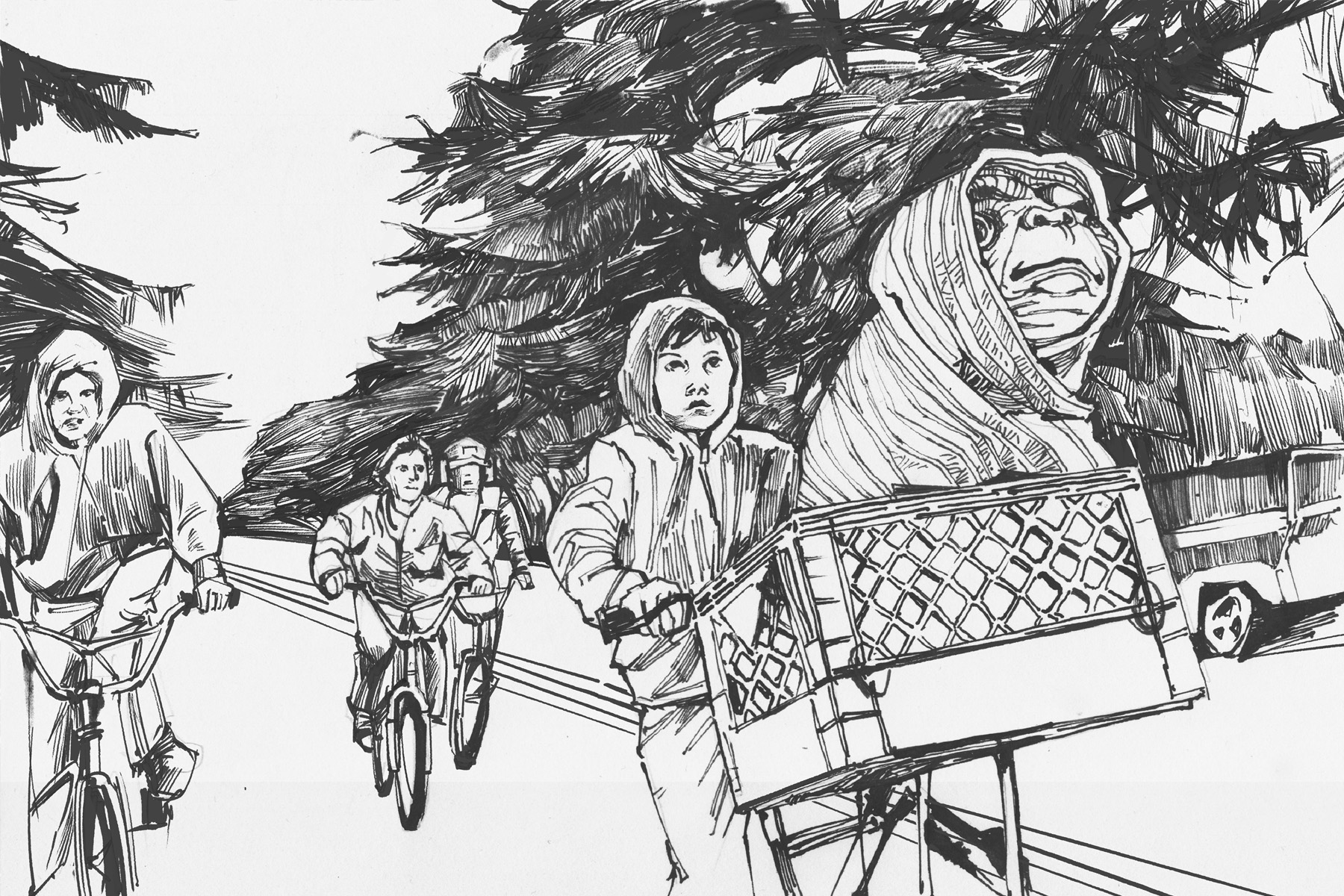
Chapter 10: The Road Back
Our protagonist begins her journey back to her familiar world. The Road Back is not an easy one; there are often wild chases, which are entertaining, even if we know their outcome in advance. They serve to bridge the gap between new and old as quickly as possible. And before you know it, our heroine is back where it all began.
You could be happy here, I could take care of you.
I wouldn't let anybody hurt you.
We could grow up together, E.T.
Eliott, E.T. – Extra Terrestrial, 1982
The familiar world has not changed. And yet it somehow seems different. Our protagonist is now a foreign body who has distanced herself from its rules and ideals. This inner change is emphasised by her outward appearance: A scar, different clothing, a different attitude. She realises that the being she has discovered within herself no longer fits into this world. And so begins a transformation that turns the rules of her familiar world upside down, makes it more colourful and shapes it according to her new ideals.
Lord of the Rings – the Return of the King: After destroying the One Ring, Frodo makes his way back to his homeland, the Shire. The effects of war and conflict have left their mark on Frodo and his world. E.T. – Extra Terrestrial: The road back culminates in a wild escape from the authorities, flying bicycles and the heartbreaking separation between Elliot and E.T. The Godfather: Michael Corleone returns from exile in Sicily to face his destiny as the future godfather of the Mafia. Pretty Woman: Vivian returns to her former world of street life in Edward’s luxury limousine to collect her belongings.

Chapter 11: The Resurrection
Strengthened and transformed, our protagonist meets his adversary one last time. It is an ultimate test, similar in content and structure to the Ordeal, but the signs are reversed. Here, too, the idea of failure is played with, only to be decisively abandoned in the next scene: This time, the hero jumps from the brink of death and finally kills his demon.
Thomas Leroy: Nina, what did you do?
Nina: I felt it. Perfect. It was perfect.
Black Swan, 2010
Dramas, in particular, take the Resurrection quite literally: a near-death experience leads to a last stand and, ultimately, the hero’s ultimate victory – with or without a loophole for an episode two. Crucial revelations shed light on the deeper meaning of the journey: the moral of the story. And our hero has fulfilled his destiny.
Black Swan: Nina’s rebirth takes place on several levels: Her murder of Lily turns out to be the death of her own innocence. Her transformation into the black swan leads to her death on stage. Films without happy endings stop abruptly in this chapter and leave us stunned. Lion King: Simba confronts Scar, the villain, and claims the throne. The Matrix: Neo sacrifices himself in the Matrix to save humanity from the machines. After he dies, his spirit comes back to life and he defeats his arch-enemy Agent Smith. Star Wars – Return of the Jedi: In the final battle on Endor, Luke faces his father Darth Vader. A duel ensues in which the father is defeated by his son. Luke refuses to give him the deathblow (and thus fall to the dark side).
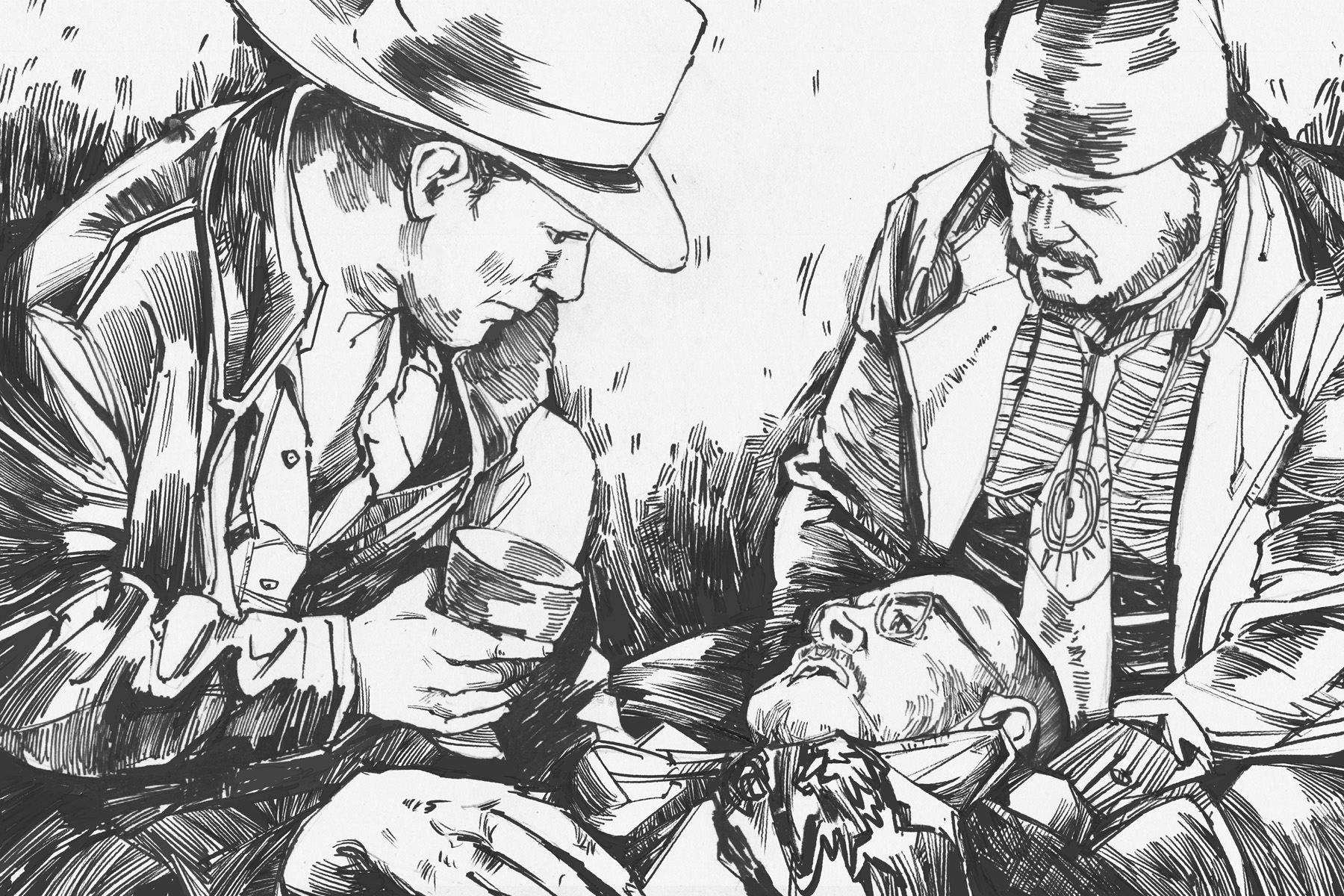
Chapter 12: The Return with the Elixir
The protagonist returns home a new person. And with her, an elixir that symbolises the change she herself has undergone. Something valuable, powerful – an object or a form of knowledge – that will also change her surroundings once and for all. It is her personal gift to the world.
But choose wisely, for while the true Grail will bring you life,
the false Grail will take it from you.
Grail Knight, Indiana Jones and the last Crusade, 1989
The return concludes our journey. And our protagonist receives the recognition she has been longing for since the very beginning. A happy ending. Or so it seems.
Until her journey begins from anew.
Thelma & Louise: The elixir is absolute freedom. Thelma and Louise refuse to let it be taken away from them when they voluntarily plunge to their deaths. Indiana Jones and the last Crusade: The elixir is the holy grail – a metaphor that goes beyond the physical: Indiana not only uses its power to heal his father’s fatal wound, it also revitalises their relationship as father and son. The Wizard of Oz: The elixir is Dorothy’s lesson about the importance of home and family. American Beauty: The elixir is the realisation that Lester Burnham expresses in his last breaths: “And I can feel nothing but gratitude for every single moment of my stupid little life.”
Literature:
The Writer´s Journey, Mythic Structure for Writers, Christopher Vogler
Memo from the Story Dept.: Secrets of Structure and Character, Christopher Vogler
The Hero with a Thousand Faces, Joseph Campbell
Weblinks:
Die Heldenreise in Der Pate, Shmoop
Die Heldenreise in Memento, Shmoop
Excepts from Myth and the Movies, Stuart Voytilla (.pdf)

Florian Hämmerle
Author

Maria Savko
Illustration
behance
